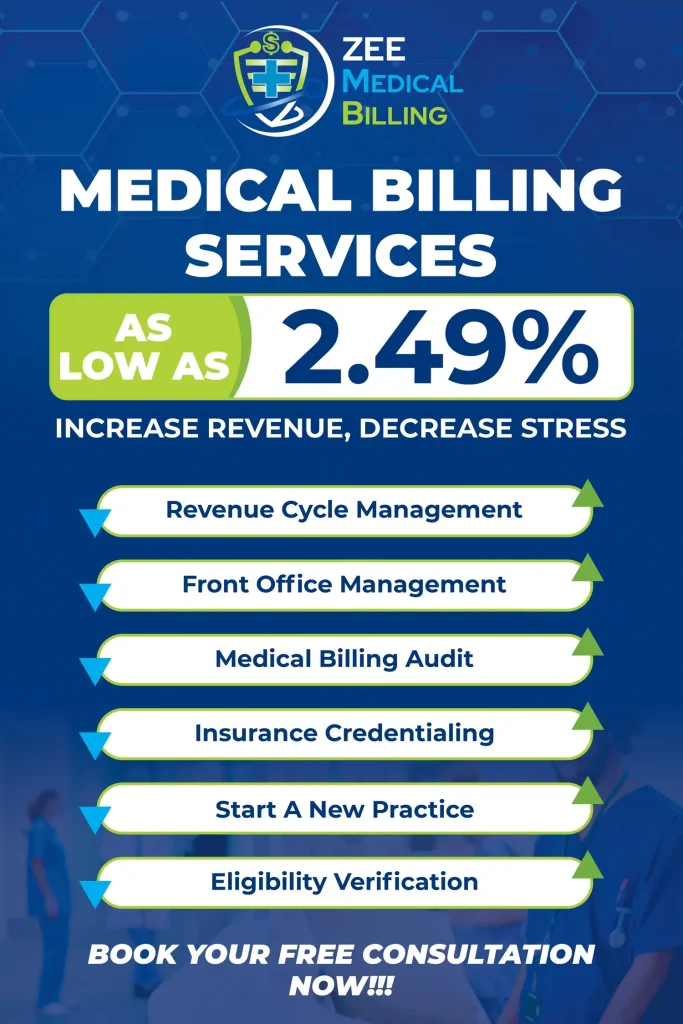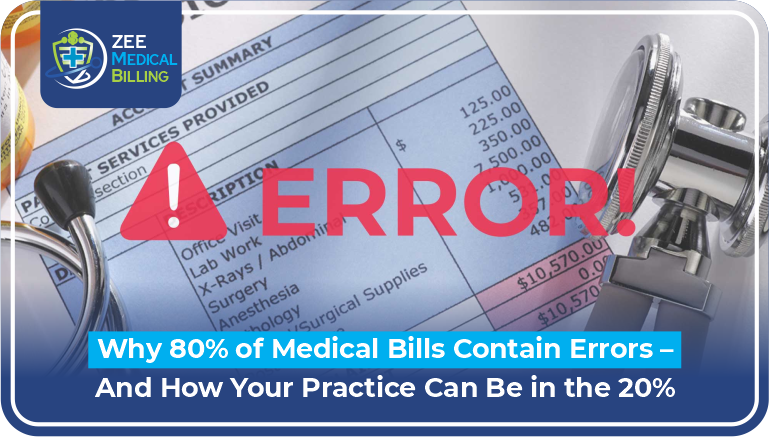Understanding modifiers in medical coding is crucial for proper billing and reimbursement. Among them, Modifier 57 plays a critical role in surgical decision-making and timely billing.
This article will explain what Modifier 57 is. The coverage will include when to use it and how it differs from Modifier 25. You will also find tips for using it correctly in medical billing.
What Is Modifier 57?
The definition of Modifier 57 is “Decision for Surgery.” Healthcare providers use it when an evaluation and management (E/M) service leads to a decision for major surgery. This must happen within the next 24 hours or right away.
Also Read: An Easy Guide to Modifier 51 and When to Use It?
CPT Modifier 57 Definition:
Modifier 57: Decision for surgery – An E/M service that resulted in the initial decision to perform the surgery.
This modifier is added to an E/M code, not a surgical code. It shows that the doctor decided during the visit that a major surgery is needed.
When to Use Modifier 57?
You should use Modifier 57 only under these specific conditions:
- The provider performs an E/M service.
- The doctor decides on that E/M visit to perform a major surgery.
- The doctors scheduled the surgery for the same day or the following day.
What Qualifies as Major Surgery?
The Centers for Medicare and Medicaid Services (CMS) defines major surgery as any procedure with a 90-day recovery period.
Example:
A patient visits the physician for abdominal pain. After evaluation, the physician decides that the patient needs an appendectomy and schedules it within 24 hours. In this case, you should append Modifier 57 to the E/M code.
Modifier 57 vs Modifier 25
Modifier 25 and Modifier 57 are often confused, but their purposes are very different.
| Feature | Modifier 25 | Modifier 57 |
| Description | Significant, separately identifiable E/M | Decision for surgery |
| Procedure Type | Minor procedures (0 or 10-day global period) | Major procedures (90-day global period) |
| Attached To | E/M services | E/M services |
| Purpose | Justifies a separate E/M on the same day as a minor surgery | Indicates surgery was decided after E/M |
In Summary:
- Use Modifier 25 for minor surgeries.
- Use Modifier 57 for major surgeries.
Common Mistakes When Using Modifier 57
Appending to Surgical Code Instead of E/M:
- Modifier 57 should only be applied to Evaluation and Management (E/M) codes, not procedural codes.
Using Minor Procedures:
- Modifier 57 is only for major surgeries (90-day global period).
Not Supporting with Documentation:
- There should be clear documentation that the E/M visit was medically necessary and led to the surgical decision.
Using Unsuccessful Procedures:
- Even if the surgery does not take place because of complications, Modifier 57 still applies. This is true if the evaluator decided on the evaluation and management (E/M) visit.
ICD-10 Codes and Modifier 57
Although Modifier 57 is a CPT/HCPCS modifier, it’s often used in conjunction with ICD-10 codes that indicate pre-surgical evaluations. Here are some relevant codes:
| Description | ICD-10 Code |
| Preoperative examination | Z01.818 |
| Pre-op clearance for surgery | Z01.812 |
| Encounter for other preprocedural evaluation | Z01.89 |
These codes justify the E/M visit that led to the decision for surgery.
Documentation Tips for Compliance
To ensure compliance and avoid denials:
- Document the symptoms, exam findings, and clinical reasoning leading to the decision for surgery.
- Note that the procedure was not planned before the E/M service.
- Include timeframes (e.g., “surgery scheduled for later today” or “within 24 hours”).
- Maintain detailed progress notes and signed consent forms if applicable.
Also Read: How and When to Use Modifier 50 in Medical Coding?
Related Modifiers You Should Know
Here are other surgical-related modifiers to differentiate from Modifier 57:
| Modifier | Description |
| 25 | Significant, separately identifiable E/M |
| 55 | Postoperative Management Only |
| 56 | Preoperative Management Only |
| 22 | Increased Procedural Services |
| 24 | Unrelated E/M During Postoperative Period |
Understanding when to use each one is key to correct billing and avoiding rejections.
FAQs
1. What is Modifier 57 used for in medical billing?
Modifier 57 shows that an E/M service led to a major surgery on the same day or the next day. It supports billing for the E/M visit separately from the procedure.
2. Can Modifier 57 be used with any CPT code?
No, you should only use Modifier 57 with evaluation and management (E/M) codes. It should not be used with surgical or procedural codes.
3. How do I know if the procedure qualifies as a major surgery?
Check the procedure’s global period in the Medicare Physician Fee Schedule. If it’s 90 days, it qualifies as a major surgery and may need Modifier 57 when preceded by an E/M.
4. Can I use Modifier 25 and 57 together?
In rare cases, both may apply, but it requires exceptionally clear documentation. For example, if you choose both minor and major procedures during the same E/M, you can use both codes.
5. Will improper use of Modifier 57 lead to claim denial?
Yes. Misusing Modifier 57 can lead to problems. For example, using it for a minor procedure or surgical code can result in denied claims or audits. Always confirm the global period and document the decision.
Final Thoughts
Using Modifier 57 correctly is essential for compliant and accurate medical billing. It ensures that the system appropriately reimburses physicians for the critical decision-making involved in major surgeries. Good documentation, knowing the differences between surgical procedures, and using the right modifier can help prevent costly mistakes.
Need Expert Medical Billing Services?
Zee Medical Billing provides professional billing solutions tailored to healthcare providers across the United States. In addition to offering top-tier support from our main office, we proudly serve clients in Illinois, Indiana, California, Kentucky, New York, Washington, Georgia, Alabama, South Carolina, Texas, Pennsylvania, Ohio, New Hampshire, Nevada, Massachusetts, Hawaii, Arizona, and Colorado! Whether you’re looking to streamline your revenue cycle or improve claims accuracy, you can reach out to us to learn more about how we can support your practice.









